As we enter 2024, Enterprise Application Integration (EAI) is a pivotal technology for businesses aiming to streamline operations and boost efficiency in an increasingly digital world. In this article, we will explore its core mechanisms, models, and what a successful EAI project and how to measure them. Understanding EAI’s fundamentals equips organizations to harness its potential, driving innovation and sustaining a competitive edge in the dynamic global market.
What is Enterprise Application Integration (EAI)?
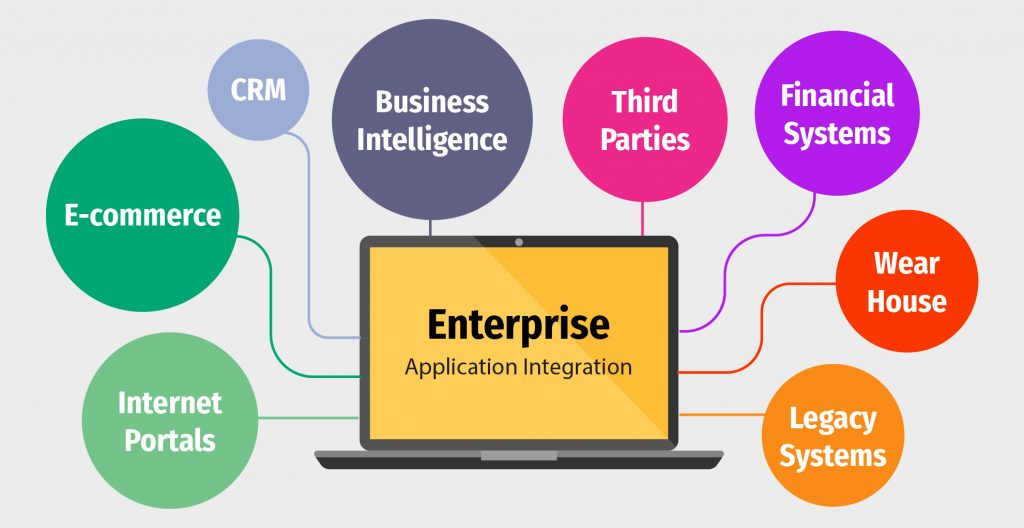
Enterprise Application Integration (EAI) represents a process for streamlining and enhancing the connectivity and communication between various software applications within an organizational ecosystem. In essence, EAI is the backbone that allows disparate systems to work cohesively, fostering a more integrated, efficient, and agile business operation.
The primary objectives of EAI are to facilitate seamless data flow, improve real-time data access, eliminate operational silos, and enable scalable integrations among different business applications.
EAI functions by creating a middleware framework that serves as a bridge between different applications, allowing them to communicate without altering their functionalities. This integration ensures that data can be shared and processes can be executed seamlessly across various platforms.
Enterprise Application Integration models
EAI can be implemented through various models, each with its own unique approach to integration:
- Point-to-point Integration:
Direct connections are established between applications, best suited for simple scenarios with few integrations. Suitable for small businesses with a limited number of applications to integrate, where managing individual connections is feasible.
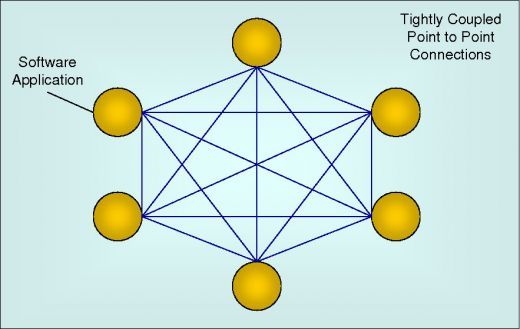
- Hub-and-spoke Integration:
A central hub facilitates communication between applications, reducing complexity by eliminating the need for each application to connect with others directly. Ideal for organizations looking to reduce the complexity of direct integrations. It simplifies maintenance and upgrades by centralizing integration logic.
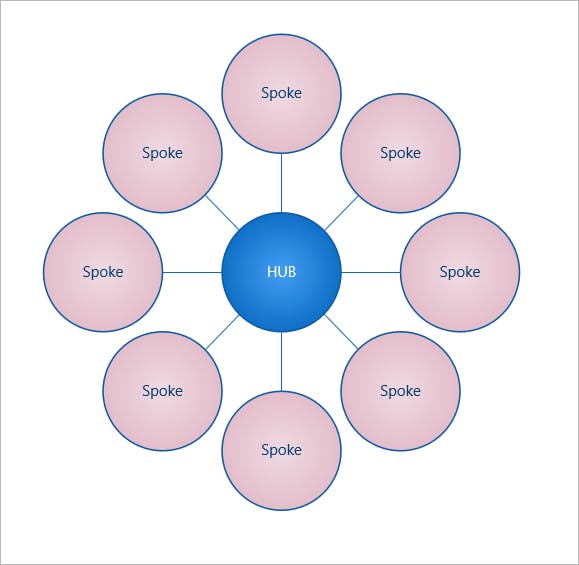
- Bus Integration:
It uses a shared communication bus where applications connect through a common pathway, promoting flexibility and scalability. Ideal for large enterprises needing scalable, flexible integration for complex scenarios like asynchronous messaging and event-driven architectures.
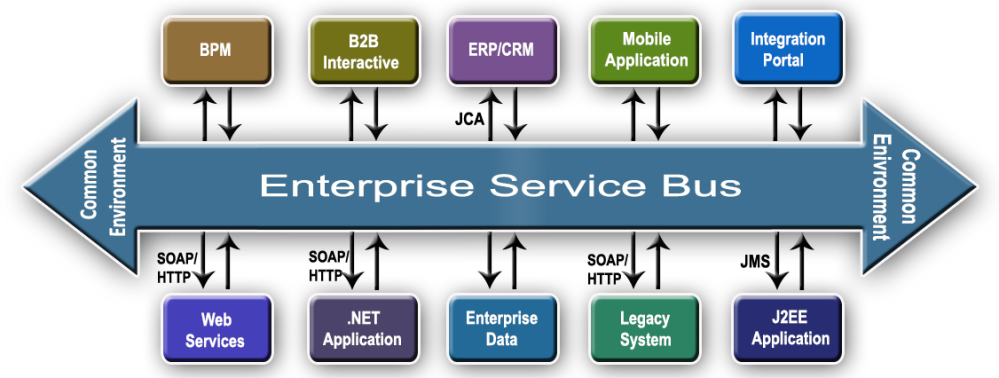
Software that acts as an intermediary layer to enable integration and communication between different applications. Ideal for integrating applications with incompatible protocols or data formats, middleware enables seamless integration by abstracting these differences.
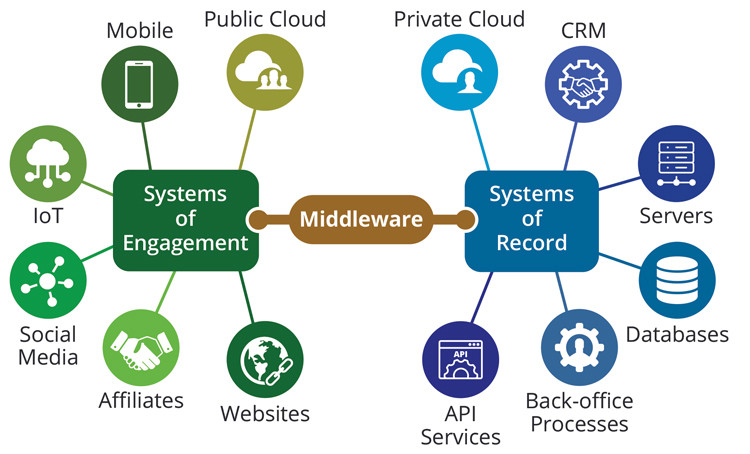
- Microservices:
Small, independent services that communicate through APIs offer high scalability and flexibility in integration. Perfect for organizations seeking agility and scalability, enabling independent deployment and scaling of components to support CI/CD processes.

Why do organizations need to adopt enterprise application integration?
In the digital age, businesses operate with a plethora of applications, such as CRM, ERP, POS, eCommerce, accounting, and so on, and they don’t communicate with each other. So, businesses need to store valuable information in different data silos. Moreover, all processes are manual, from entry to report. It led to wasted resources and time, even facing various human errors.
Enterprise application integration is vital for ensuring these applications can share data and functions effectively, leading to enhanced operational efficiency, real-time data analysis, and the agility to respond to market changes promptly. It fosters better decision-making, enhances the customer experience, and increases business agility, all factors that contribute to long-term success.
The components of enterprise application integration

Enterprise application integration comprises several critical components, each playing a significant role in the integration process: data integration, application communication, and business process management.
Data Integration
Data integration in EAI consolidates data from various sources to provide a unified, accurate view across an organization, enabling efficient communication between systems, databases, and applications for improved decision-making and operational efficiency.
To implement data integration in EAI, the Extract, Transform, Load (ETL) process and Enterprise Data Warehousing are key. ETL unifies data by extracting it from varied sources, transforming it for consistency, and loading it into a central repository. This ensures data accuracy and accessibility. Meanwhile, Enterprise Data Warehousing stores this integrated data, supporting complex analyses. Together, they create a powerful framework for seamless data integration and strategic decision-making.
Application Communication
Application communication in EAI enables different software applications within an organization to share data and functionalities seamlessly. Through APIs, middleware, message brokers, and communication protocols, it ensures efficient information exchange, facilitating cohesive workflows and decision-making.
SOAP and REST are essential EAI protocols; SOAP ensures secure, standardized exchanges with XML, while REST supports scalable, stateless communication via HTTP, ideal for web services. Each caters to specific integration needs, including security and performance.
Business Process Management
BPM in EAI optimizes and automates workflows across systems, enhancing efficiency and organizational agility through process design, execution, and optimization. Its tools include Business Process Modeling and Workflow Automation. Business Process Modeling maps out operations for clarity and improvement, while Workflow Automation uses technology to streamline processes, reduce manual tasks, and enhance efficiency. Together, they enhance productivity and operational agility by optimizing business workflows.
Top 3 best practices for EAI implementation
Enterprise application integration aims to simplify complex digital architectures and increase business agility. It connects disparate systems to enhance collaboration. Integration allows many services, tools, and systems to work together to efficiently complete operational tasks. Here are some examples:
Order processing
You can use EAI to connect eCommerce platforms, inventory systems, and CRMs. When a customer places an order, with an EAI system in place, inventory data is automatically updated, order details are sent to the fulfillment center, and the customer receives notifications throughout the process.
Marketing automation
You can use EAI to connect marketing services into a central hub. You can integrate both the creative and financial aspects of marketing to ensure high data availability and efficiency. Another advantage is that you can automate the payment of marketing services and feed invoices directly into your financial records.
Project management
EAI tools can connect your HR and project management systems. You can schedule projects, assign tasks, track progress, and include financial reporting modules in one place. EAI is very useful for simplifying complex management architectures.
The challenges of enterprise application integration and how to overcome them
Enterprise application integration offers a multitude of benefits, but implementing and maintaining a successful EAI solution can be complex. Here are some of the key challenges organizations face, supported by data sources:
- Cost: EAI requires upfront investment in technology, skilled personnel, and ongoing maintenance. A 2023 study by CIO Magazine found that 42% of respondents cited cost as the biggest barrier to EAI adoption.
- Data Integration Complexity: Disparate systems often have inconsistent data formats and quality. A research paper published in the International Journal of Computer Applications highlights data mapping complexity and data governance as significant hurdles.
- Security Concerns: Integrating systems creates new pathways for data flow, potentially increasing security risks. According to recent research, data breaches cost businesses an average of $4.24 million, making robust security measures crucial for EAI.
- Lack of Skilled Personnel: Implementing and maintaining EAI requires specialized skills. A 2021 IT workforce survey by CompTIA found a significant skills gap, with many organizations struggling to find qualified IT professionals.
Organizations can overcome these challenges by achieving a technically sound integration, maximizing the business value it delivers, choosing the right EAI model, investing in scalable solutions, and ensuring continuous monitoring and maintenance of the integration framework.
What is a successful EAI project?
A successful enterprise application integration project hinges on both technical soundness and business value. Faulty data exchange can cripple even the best plans, as evidenced by a 40% failure rate due to technical issues. Ensuring data accuracy, robust error handling, and standardized formats builds a reliable foundation for integration. Research by Aberdeen Group [source needed] also suggests faster integration times lead to quicker return on investment (ROI). By prioritizing efficient development tools and pre-built connectors, you get to the business benefits faster.
But flawless data transfer is just the beginning. A well-designed EAI unlocks real business transformation. Streamlined processes can lead to cost savings, faster time-to-market can boost revenue, and improved data quality can enhance customer satisfaction. By focusing on both technical excellence and clear business goals, you ensure your EAI project becomes a bridge to a more efficient, profitable, and customer-centric future.
How can I measure the success of my EAI project?
Measuring the success of your enterprise application integration project goes beyond just technical functionality. While smooth integration with minimal errors and fast data transfer are crucial, the true win lies in how they benefit your business. Here’s how to gauge that success:.
Track how the enterprise application integration project impacts your bottom line. Did it streamline processes, reduce costs, or open doors to new revenue streams? Look for metrics like faster time-to-market, improved customer satisfaction through better service, or even cost savings through automation.
Don’t forget user adoption. Happy users are key to maximizing the value of your enterprise application integration project. So factor in user feedback alongside the numbers to get a well-rounded picture of how the project is performing. By combining these elements, you’ll be able to clearly demonstrate the positive impact of your EAI project on your organization.
Conclusion
Enterprise application integration is crucial for businesses seeking to boost efficiency and competitiveness in 2024. It enables seamless integration, innovation, and growth, remaining key to digital transformation and success in the evolving global market. If you need more information about data integration and how to use it, please contact us.